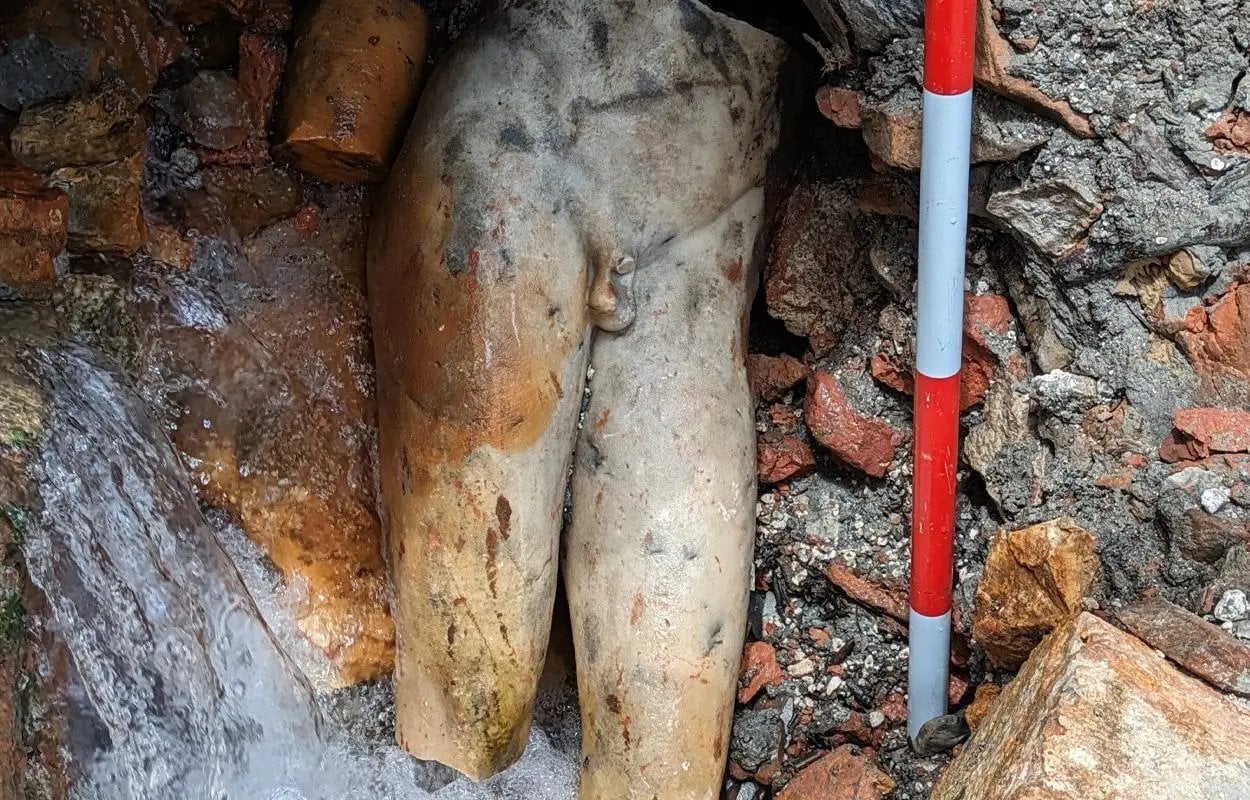
In a recent archaeological discovery at San Casciano dei Bagni in Tuscany, Italy, experts stumbled upon a marble statue of Apollo Sauroctonos, also known as the “Lizard-Slayer.” This finding occurred during excavations of an ancient Etruscan and Roman bath.
The bath, powered by geothermal springs, provided the Etruscans with water at a comfy 42 °C (108 °F) for the Balnea Clusinae complex.
Legend has it that Porsenna, an Etruscan king of Chiusi, founded the site. However, archaeologists lean towards the idea that the Etruscans built the complex in the third century BC.
In Roman times, the spa gained fame for its healing properties, drawing in important figures like Caesar Augustus, who visited regularly, as reported by Heritage Daily.
Apollo statue found at ancient Etruscan and Roman baths
Archaeologists discovered pieces of a life-sized Apollo Sauroctonos statue near the Great Bath. These fragments are Roman replicas of a bronze statue crafted by the famous Greek sculptor Praxiteles, who was a leading artist in Attica during the 4th century BC.
Typically made between the 1st and 2nd century AD, these copies show Apollo in his youthful form, ready to catch a lizard climbing a tree.
The Roman poet Martial even wrote a short poem, or epigram, about these statues, warning: “Spare the lizard, treacherous boy, creeping toward you; it desires to perish by your hands.”
[Statue of Apollo “Lizard Killer” found at Etruscan and Roman spa]
(Image Credit: Ministry of Culture)
Archaeologists have found a marble statue of Apollo Sauroctonos, also known as the “Lizard Killer”, during excavations of an Etruscan and Roman spa at San Casciano dei Bagni… pic.twitter.com/VVbU6wrYH3
— Orero Creations (@OreroCreations) November 25, 2023
Apollo, a revered deity linked to healing and ailments, was the recipient of votive offerings from those seeking remedies for their health issues. The portrayal of Apollo hunting a lizard holds a connection to ophthalmology, as lizards were believed to have healing properties for eye complaints.
Among the findings, excavations revealed a travertine votive altar dating back to the 1st century AD. This altar had a bilingual inscription in both Latin and Etruscan, highlighting the continued influence of Etruscan culture well into the Roman Imperial Era.
Dancing Apollo figure was previously uncovered
Among the remarkable bronze findings in 2022 was a dancing Apollo figure unearthed from the oldest basin at the sanctuary. This figure is estimated to be from around 100 B.C.
In terms of size and style, the marble Apollo Sauroctonos likely dates back to the 2nd century A.D.
However, it suffered damage in the early 5th century A.D. when the Christianization of the area resulted in the toppling of temples and statues into the basins, leading to the closure of the sanctuary, according to The History Blog.
The hot springs and mineral waters of San Casciano dei Bagni were thought to have healing powers, believed to be bestowed by divine figures skilled in medicine such as Hygieia (Greek goddess of health), Apollo (Greek god of healing and diseases), and Asclepius (Greek god of health).
Those who bathed in the hot springs believed they were directly connecting with these gods, seeking cures for various illnesses and conditions.